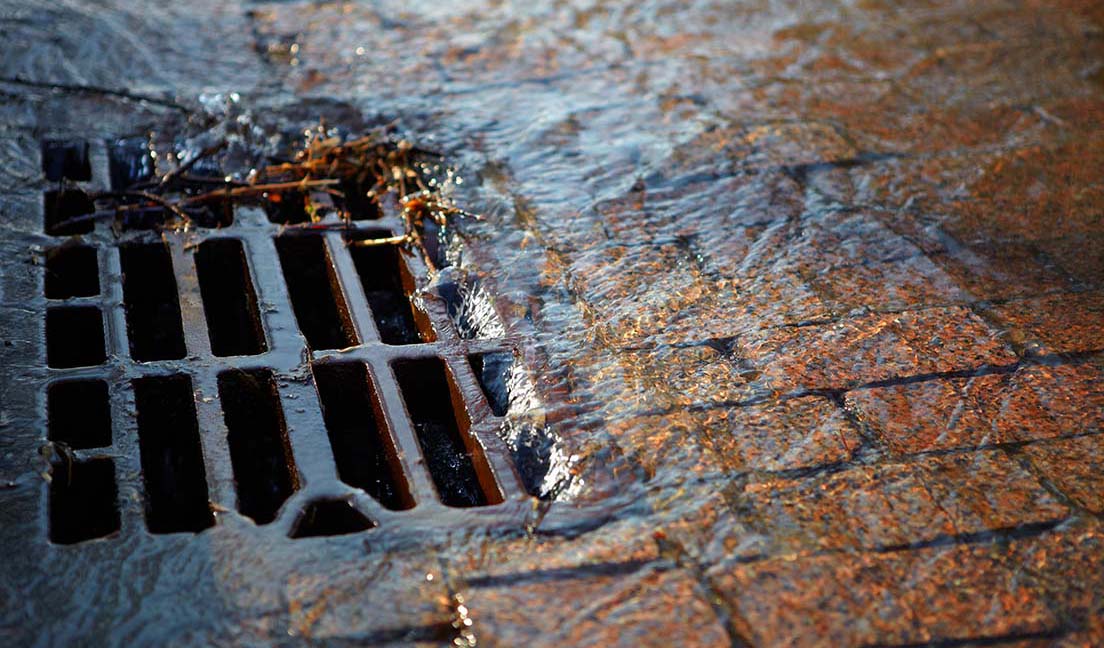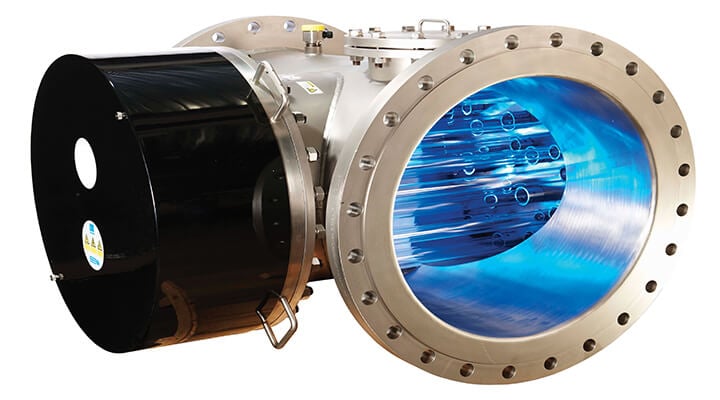More than 700 communities around the country have a combined sewer system, making them susceptible to overflow during heavy wet-weather events. Patrick Bollman, P.E., a UV product specialist with Evoqua Water Technologies, discusses how ultraviolet disinfection is emerging as a viable option for treating CSO wastewaters.

Q: Can you provide some background information on how prevalent combined sewer overflows are and what the current state of concern is?
Patrick Bollman (PB): Combined sewer overflows (CSOs) occur when a city’s wastewater and stormwater drain into the same treatment system. When this is the case, during heavy wet weather events, the flow exceeds the hydraulic capacity of the wastewater treatment plant (WWTP) or a collection system that transports flow to the WWTP. The overflow is often discharged to a receiving body of water. This overflow often combines a variable mixture of untreated human and industrial waste, polluted runoff, debris and scoured materials that build up in the collection system during dry weather periods. Discharge contains a variety of contaminants such as chemicals, pathogenic microorganisms, viruses and cysts that impair water quality and impact human health and wildlife.
The 2017 Infrastructure report by the American Society of Civil Engineers (ASCE) estimates that in approximately 772 communities, wastewater and stormwater drain into the same treatment system and are susceptible to CSOs. These are the leading source of water pollution the U.S. In addition, as communities grow, so does the number of sidewalks, streets, parking lots, roofs - impermeable surfaces that increase the amount of runoff entering the stormwater system.
Q: Chlorine has been readily used to disinfect wastewater. Why may this not be the most feasible option for CSOs?
PB: Methodology may not be feasible to use chemical disinfection. CSO events occur intermittently and vary in flow rate making it difficult to regulate the addition of a chemical disinfectant. Residual disinfectants from chlorine disinfection may be prohibited from receiving waters as the increased health and safety concerns regarding use has prompted alternative disinfectants with fewer hazards. In addition, some CSO outlets are located in remote areas that may require automated disinfection systems.
Q: How does ultraviolet (UV) disinfection solve the concerns of CSOs?
PB: UV disinfection applies only light to water to provide germicidal effects. UV disinfection works by altering the DNA of pathogenic organisms preventing replication. UV is a chemical-free solution. No metering pumps or chemical storage is required and no dangerous byproducts are formed through chemical addition. Utilization of medium pressure lamps in closed vessel reactors reduces footprint and startup time required for proper treatment and disinfection.

ETS-UV Disinfection System - Model-SW
Q: Are there concerns with water quality from CSOs and effective UV treatment?
PB: There are concerns but they can be overcome by a proper design and understanding of the effluent that needs to be treated. CSOs can lead to low UV transmittance (ability of UV light to pass through the fluid) and high total suspended solids (TSS). Both of these parameters will impact the amount of UV equipment/power that is required. CSOs might not be designed around standard WWTP design parameters. Analysis should be performed to determine water quality expected to be treated by the UV system prior to installation and startup.
Q: What does Evoqua Water Technologies offer for UV treatment CSO disinfection?
PB: Evoqua has a range of UV reactors that can handle various flows and water qualities. We manufacture Barrier® and ETS-UV™ disinfection systems. We can offer both medium-pressure solutions for limited footprint applications and/or low-pressure, high-output solutions in locations where space is available and/or electrical usage is of concern.
Evoqua recently supplied two closed vessel ETS-UV medium pressure UV systems for a CSO/WWTP facility in Indiana. Each reactor is designed to treat up to 6 MGD of filtered CSO water to meet Indiana Department of Environmental Management (IDEM) discharge requirements. The equipment was selected based upon the ability to get the equipment approved by IDEM, the compact footprint, and the ability to meet tight delivery and start up dates.
